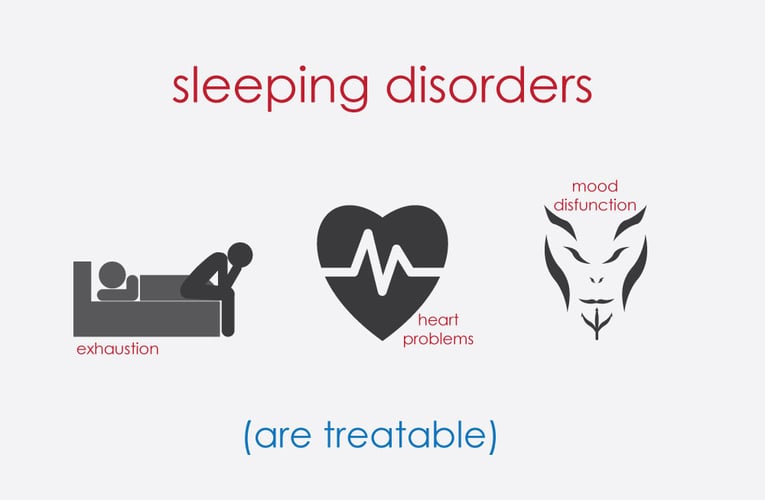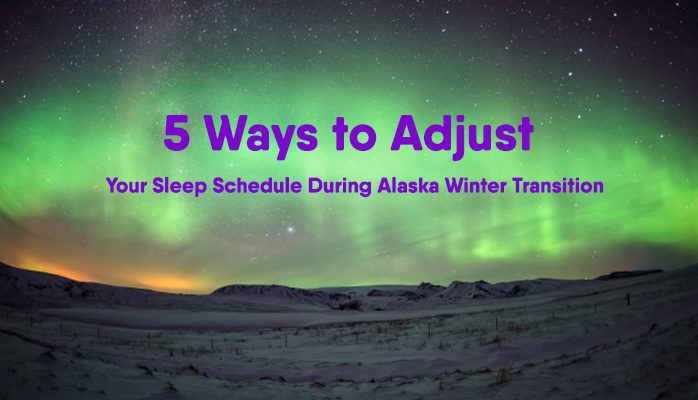Why Alaskan Winters Can Be Bad for Sleep
Much of the year in Alaska, we live in either extreme darkness or extreme light. These extreme conditions affect our lives in many different ways:
- Psychologically
- Physiologically
- Habitually
- Emotionally
- Sociologically
Unfortunately, the long darkness affects our lives in ways that aren’t usually conducive to sleep. Perhaps you suspect that you have developed a sleep disorder or your existing sleep disorder has flared up.
Alaskans have to work harder to maintain a normal sleep schedule in winter. The good news is that there are many tricks you can use to help maintain a normal sleep schedule, though some people will need more direct intervention from sleep specialists or healthcare practitioners.
Signs the Alaskan Darkness Transition is Causing Sleep Disorder
As we transition into Winter, sleeping disorder symptoms will creep up slowly. Some signs that the seasonal change and/or long winter darkness may be causing or worsening a sleep disorder are:
- Never feeling like you get enough sleep – can’t fall asleep, stay asleep, or wake up too early
- General performance loss in many important areas of life (work, relationships, etc.)
- Chronic daytime fatigue
- Being unable to stay awake during the day
- Sudden onset of sleep-readiness at an odd hour during the day
- Uncharacteristic memory trouble
- Concentration problems
- Chronic brain fog
- Chronic headaches in the morning
- Increased anxiety that is not normal
- Depression
- Uncharacteristic mood troubles
If these symptoms begin or worsen as we transition into our long, dark winters, it may be related to a sleep disorder.
Here are 5 ways to help yourself adjust to the darkness.
1. Use Light Therapy in Alaska Winters
Light therapy is the best method to help adjust during the seasonal transition and maintain healthy melatonin levels all winter long. Light therapy tricks your body into thinking that sunlight is present when it isn’t.
Melatonin is a light-sensitive hormone that regulates sleep, and it responds to changes in light. When dark transitions to light in the morning, it triggers your body to stop secreting melatonin. In the evening time, the opposite happens.
Light therapy exposes you to bright fluorescent light bulbs encased in a box with a diffusing screen. This light is designed to simulate the intensity of light (10,000 lux) in a way that is safe for the eyes. Timing is everything.
- Start exposing yourself to your light box in the morning
- Stop exposing yourself to your light box in the evening
You can find many light therapy lamps online for affordable prices. You should start using light therapy when the amount of darkness is greater than the amount of light during the day.
2. Use Best Drinking Habits for Sleep
You may need to adjust your drinking habits during the transition to help promote sleep. Though these are rather obvious, drinking habits to change that are helpful for sleep are:
- No alcohol right before bed
- Limit total caffeine intake
- Limit caffeine intake after noon
- Limit liquids directly before bed
Alcohol suppresses REM sleep. Too much coffee or coffee too late in the day keeps many people up. Too much liquid directly before bed may wake you up in the middle of the night.
3. Establish Strong Pre-Bedtime Routines
Pre-bedtime routines are a way to trick your body into producing melatonin. What you are attempting to do with strong pre-bedtime routines is condition your body for sleep by using routines. It’s the same idea as Pavlov’s dog, but for sleep.
Examples of this practice include:
- Do the same actions before bed every evening
- Cut out blue light (TV, computers, smartphones) in the hour leading up to bed
- Using scents, such as essential oils
- Listen to the same music before bed
- Do a specific calming activity, such as meditation, washing, etc.
A great type of resource for learning how to establish strong pre-sleep routines is, believe it or not, websites discussing setting routines for sleep training children.
4. Get Exercise, Do it In the Morning
While the lack of light in Alaskan winters can cause sleep problems, the cold (along with the darkness) is not the ideal environment to get exercise outdoors. Exercise is extremely important for ensuring that you feel tired when you are supposed to feel tired.
Exercise is harder in winter. Plain and simple. You have to put more clothes on. It’s not as comfortable as other seasons, like the summer. Your options are much more limited than when it’s warm. This is especially true if you do not do winter sports, such as skiing or ice skating.
For these reasons, we simply exercise less during the winter in Alaska. Fortunately, it’s also an easy thing to fix:
- Find an activity outside you like
- Get a gym membership
- Get an at-home workout series, such as P90X
5. Take Hot Baths Before Bed
Our body naturally prepares for sleep not just in response to light, but also in response to changes in temperature. Temperature drops tell our bodies night is coming and can help trigger melatonin production.
In pre-industrial days, bodies could sense this drop, but since the advent of home heating, your body may not sense this change.
However, you can artificially create this change when bathing. As you get out of a hot bath, your core body temperature drops, thus simulating what happens to temperatures at night, and tricking your body into thinking it’s time for bed.
What to Do When These Sleep Practices Don’t Work
Sometimes, these tricks don't work and you may still struggle with sleeping thorougly. Some situations, such as existing sleep disorder problems, require more than self-conditions or preparation. If you have tried everything, take this free online sleep test to get started on the road to better sleep in Alaskan winters.


